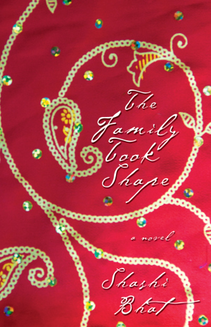THE WRITER TAKES SHAPE:
A REVIEW OF SHASHI BHAT'S
THE FAMILY TOOK SHAPE
BY LEE SHEPPARD
The Rusty Toque | Reviews | Issue 5 | November 15, 2013
LEE SHEPPARD is a writer, a
contributing editor of the literary magazine Pilot and a teacher at West End Alternative Secondary School in
Toronto where he has developed and currently teaches two project-based courses:
ReelLit a film-studies and video
production program and The West Enders,
a creative writing and illustrating program that produces an eponymous
illustrated literary journal.


